Din Tai Fung
 1/2 This was our first restaurant meal in Beijing, and I realize it’s mixed up to be eating soup dumplings in a city not known for them, especially when a Shanghai visit is only a few days off. And it’s even more mixed up to eat a Shanghai specialty at a Taiwanese chain that’s branched all the way to L.A. But Din Tai Fung is highly regarded and I wanted to see what all the fuss was about.
1/2 This was our first restaurant meal in Beijing, and I realize it’s mixed up to be eating soup dumplings in a city not known for them, especially when a Shanghai visit is only a few days off. And it’s even more mixed up to eat a Shanghai specialty at a Taiwanese chain that’s branched all the way to L.A. But Din Tai Fung is highly regarded and I wanted to see what all the fuss was about.
Plus, we were foreigners so we could do whatever we wanted. Well, at least that’s what one of James’s Chinese coworkers told him when he asked about etiquette and making restaurant reservations in particular. I love dubious information from Chinese living in America. This same coworker was also horrified at my hotel choice in Shanghai, Old House Inn, which she originally thought was James’s idea because no female would pick a place like that (I choose all the hotels and restaurants when we travel—I guess that makes me the decider? And while I’m all for splurging on meals, I’m stingy with lodging. I don’t need luxury, coddling or spa treatments, but I hate ugly and generic too. It’s not always easy finding something boutiquey under $120 night, my rough limit for hotels in Asia). “Five star all the way” was how she described her mode of travel. “Five star all the way” and “we’re foreigners, we can do whatever we want” became the catch phrases of China vacation 2007.
Not knowing Beijing for shit, we had a heck of a time finding this place even armed with a map. We tried the subway, which isn’t so bad despite what guidebooks tell you. Not to be all proud and mighty, but if you ride the subway in NYC every day you’re fairly desensitized to supposedly off-putting things like crowds, buying tickets from machines and transferring lines.
Though, I will say that a full train by NYC standards is not so in Beijing. We crammed in one that by my reckoning was at capacity, packed enough that here a rider would just wait for the next one. But in China that does not prevent people from pushing your back with much more force than one would expect from such small frames and squeezing in another five humans. With bikes that fit through impossibly precarious spaces on the road and taxis maneuvering through traffic, missing pedestrians’ legs by inches, I couldn’t help but think of Chinese as mice burrowing everywhere unscathed. I’m hyper aware of personal space so it was mystifying.
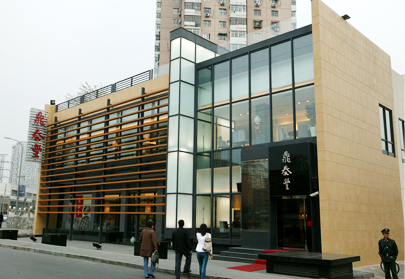
We trudged on a busy road for a while, then meandered through some back streets, not hutongs per se, and took a shortcut through a housing project, which ended at a fenced-off canal. I could see what I thought must be Din Tai Fung (there wasn’t any signage, at least not in English) across the water and parallel street. It was much fancier than I’d anticipated; this was no hole in the wall dumpling joint. People on bikes were walking their vehicles through a little open section in the metal fence (once again squeezing through smallness—they could’ve just opened the gate, it looked like) so we popped through, too.
I’ll freely admit that I’m not a xiaolongbao connoisseur at all. I’ve never been to Joe’s Shanghai, in fact I’ve only eaten them in New York maybe twice. I still think it would be safe to say that Din Tai Fung’s version is exemplary, if only because of the insane thinness of the dumpling skins.
And just like unnecessary subway warnings for tourists, I don’t get all the caveats that go along with eating soup dumplings. You bite a little hole, suck out the broth and eat the thing. It’s not really that messy or complicated. Oh, and you dip the delicate package in black vinegar laced with julienned ginger first. You kind of have to eat them fast, we made it through eight and then the last two in the steamer had cooled down enough to start sticking to the bottom. There’s nothing worse than a soup dumpling bursting before you can get it on your spoon.
We ordered a batch of pork dumplings and another of hairy crab with roe. There was something very pristine about these little buns, despite their juiciness. In a way, the pork almost seemed more appropriate being simple rather than luxurious. We ate all twenty no problem.
Orange flavored pumpkin slices were kind of unusual. I expected a softer texture, but I’m fairly certain the squash was raw. James isn’t really a picky eater at all, as far as picky eaters go, but he’s not into organ meat which was kind of unfortunate. I love cold, spicy appetizers made with tendon, tripe, jellyfish, tongue, any of that. Pumpkin slices are what you get when you’re trying to steer clear of weirdo meats.
I’d read something about red bean buns for dessert, but I didn’t see them on the menu. When I asked about them, well, I experienced my first China mishap: an outrageously large portion of red bean ice. Yikes. I’m not opposed to less than sweet Asian treats, but this was way too much for two to pick at.
Din Tai Fung also introduced us to a few quirks of Chinese dining that existed at every single restaurant we dined at bar our two most expensive meals:
1. A ticket with your order is either left on the table or put in a slot along the table and gets pulled out and scrutinized by various staff members maybe every five minutes. Nothing changes, nothing extra has been ordered, but everyone seems very concerned with double checking. Or maybe I totally misunderstood what they were doing.
2. You put your jacket over the back of your chair and someone comes along with a nylon cover that fits over the whole thing. The coat protector is way easier than a coat check.
3. You only get one menu, and this was the case at all restaurants high end and low. I suspect it's because one diner is meant to act as host and order everything for everyone but it did take getting used to.
Din Tai Fung * 24 Xinyuanxili Zhongjie, Beijing, China
Exterior photo from Din Tai Fung. Mine has cars in it so it's less attractive, though it's notable that the professional one also looks gray and gloomy. I think Beijing just looks like that.

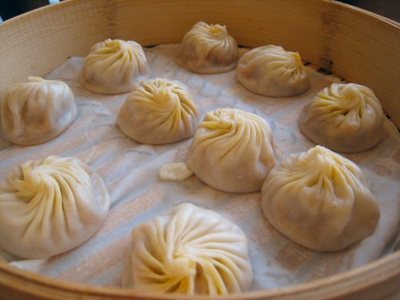
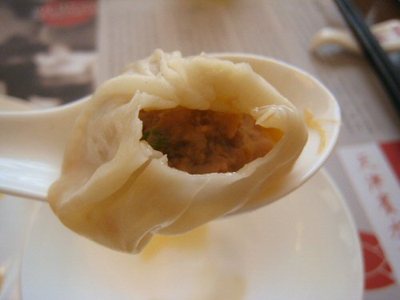
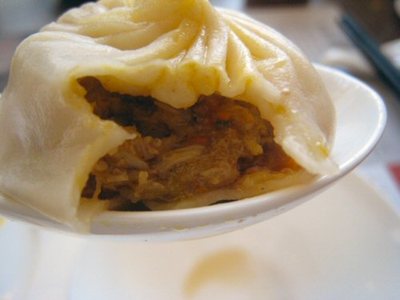
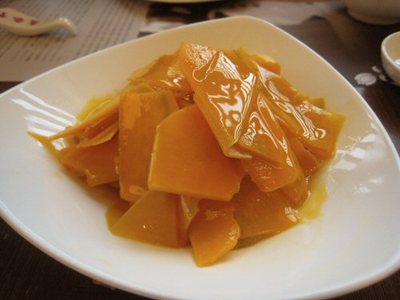
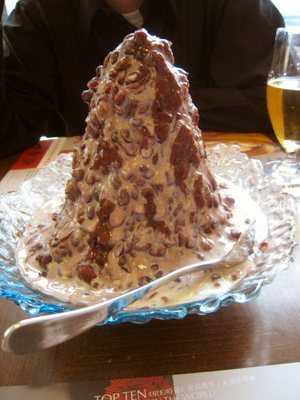
 Follow
Follow





So you’re into organ meat, that opens up to another world of eating, especially in the Chinese cuisine, they don’t waste any part of the poultry. Have you tried chicken or duck kidney? It has a crunch to it, duck kidney is often slowed cooked in light & dark soy sauce as an appetizer, braised with other meats & veggies as a main dish, etc. Chicken intestines are often stir-fried with veggies and it has a chewy texture, maybe it’ll remind you of elastic bands haha, but I like it. Pork intestine is often stir-fried as well. I’m not very into liver of any kind as it is kind of dry and it sticks to my mouth. Beef tendon are often served in a noodle house with beef briskets, beef tripe, etc, if well cooked, all of them should be soft. This one might scare you a bit, pork blood. It’s solidified and are in cubes, its texture is a little similar to tofu, you can find it in congee or other dishes. Have you tried chicken feet at dim sum places? A lot of Westerners are disgusted with what some Chinese eat, I can see you seem to accept some of them, at least you’re very willing to try new food. Intestines taste great, but can’t eat too much as it is very high in chlestrol.
Chris: Yes, I like organ meat. I don’t eat kidneys much, but mostly because they’re not served much here. I also never see chicken intestines in the US, usually beef or pork. I have tried chicken feet, though they seem tricky to eat since you have to work around the bones. They also use the blood cubes in some Malaysian soups, which I haven’t tried. I have eaten a Filipino blood stew called dinuguan before.
Chris: Yes, I like organ meat. I don’t eat kidneys much, but mostly because they’re not served much here. I also never see chicken intestines in the US, usually beef or pork. I have tried chicken feet, though they seem tricky to eat since you have to work around the bones. They also use the blood cubes in some Malaysian soups, which I haven’t tried. I have eaten a Filipino blood stew called dinuguan before.